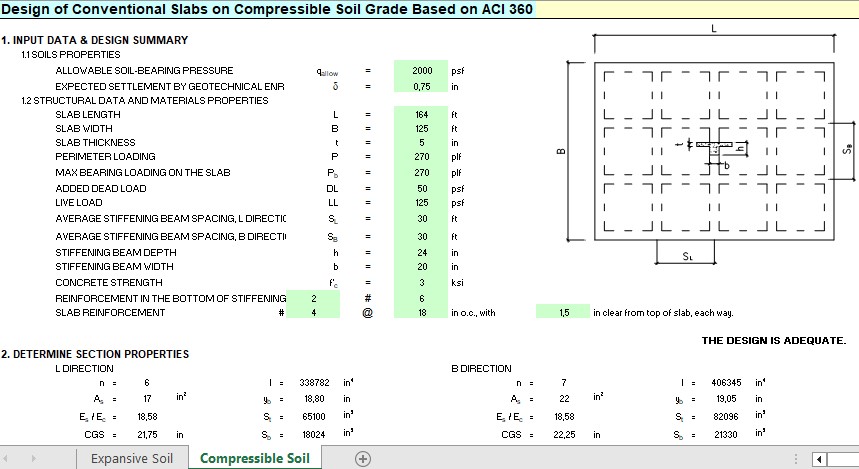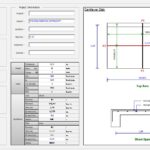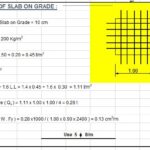
Design of Conventional Slabs on Compressible Soil Grade Based on ACI 360 Spreadsheet
12 February 2023Design of Conventional Slabs on Compressible Soil Grade Based on ACI 360 Spreadsheet
Constructing buildings on compressible soil presents unique challenges, particularly when it comes to designing and installing conventional concrete slabs. Compressible soils, such as clay, silt, and loose sand, are known for their tendency to shift under load, causing settlement and potential structural damage. In this article, we’ll explore the considerations, challenges, and best practices for working with conventional slabs on compressible soil.
What are Conventional Slabs?
Conventional slabs, or ground-bearing slabs, are concrete slabs that rest directly on the ground. They distribute the structure’s weight evenly over the soil beneath, relying on the ground’s bearing capacity for support. This type of slab is widely used in residential, commercial, and industrial buildings due to its cost-effectiveness and simplicity.
Understanding Compressible Soil
Compressible soils have low shear strength and high compressibility, making them prone to settling and shifting. Common types include:
- Clay: Expands and contracts with moisture changes.
- Silt: Susceptible to erosion and compaction.
- Loose Sand: Lacks cohesion, leading to uneven settling under loads.
Such soils pose a significant risk to the stability of structures supported by conventional slabs.
Challenges of Conventional Slabs on Compressible Soil
- Uneven Settlement
- Compressible soils can settle unevenly under the slab, leading to cracks and structural instability.
- Reduced Load-Bearing Capacity
- Weak soil may not support the weight of the slab and the structure, causing failure over time.
- Moisture Sensitivity
- Clay-rich soils can swell or shrink with moisture fluctuations, affecting the slab’s integrity.
- Structural Cracks
- Stress from soil movement often results in visible cracks on the slab surface, compromising durability and aesthetics.
Best Practices for Designing Slabs on Compressible Soil
- Soil Assessment
- Conduct a thorough geotechnical investigation to understand the soil’s properties and bearing capacity. This assessment helps determine whether soil improvement or a specialized slab design is required.
- Soil Stabilization
- Improve the soil’s load-bearing capacity by methods such as:
- Compaction: Reducing voids in the soil.
- Chemical Stabilization: Adding lime or cement to enhance soil strength.
- Geotextiles: Reinforcing the soil with geosynthetic materials.
- Improve the soil’s load-bearing capacity by methods such as:
- Reinforcement Techniques
- Use reinforced concrete slabs with additional steel reinforcement to handle uneven soil movement and reduce cracking.
- Floating Slabs
- Consider using floating slabs, which are designed to move with soil changes, minimizing stress on the structure.
- Proper Drainage Systems
- Install effective drainage systems to control moisture levels in the soil and reduce its compressibility.
- Structural Isolation
- Use isolation joints to separate the slab from the foundation, allowing independent movement and reducing stress transfer.
Advantages of Addressing Soil Compressibility
- Enhanced Durability: Properly designed slabs last longer and resist cracking.
- Cost Savings: Preventing structural damage reduces long-term repair costs.
- Improved Safety: Stable slabs ensure the safety of occupants and the structure.
Conclusion
Building conventional slabs on compressible soil requires careful planning, precise design, and advanced soil treatment techniques. While challenges such as uneven settlement and moisture sensitivity can pose risks, modern engineering solutions provide effective ways to address them.
By assessing the soil, stabilizing the ground, and incorporating proper reinforcement, you can ensure that your structure is safe, durable, and cost-effective. For professional guidance, consult geotechnical engineers to develop the best approach tailored to your project.








